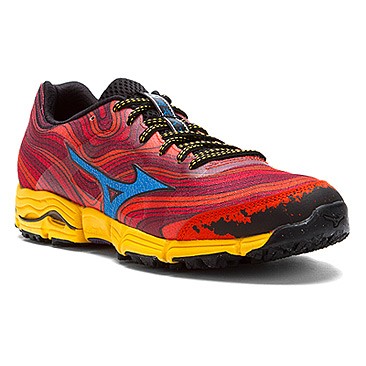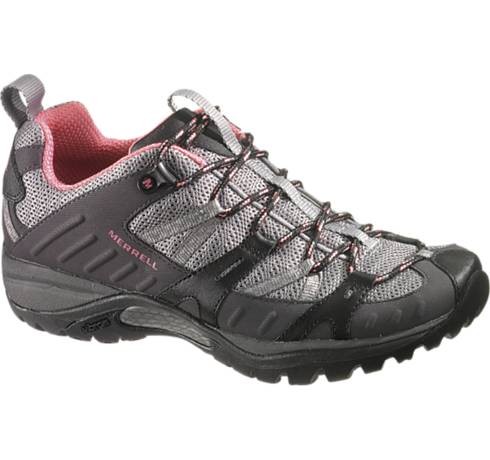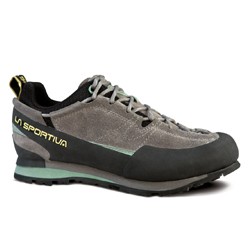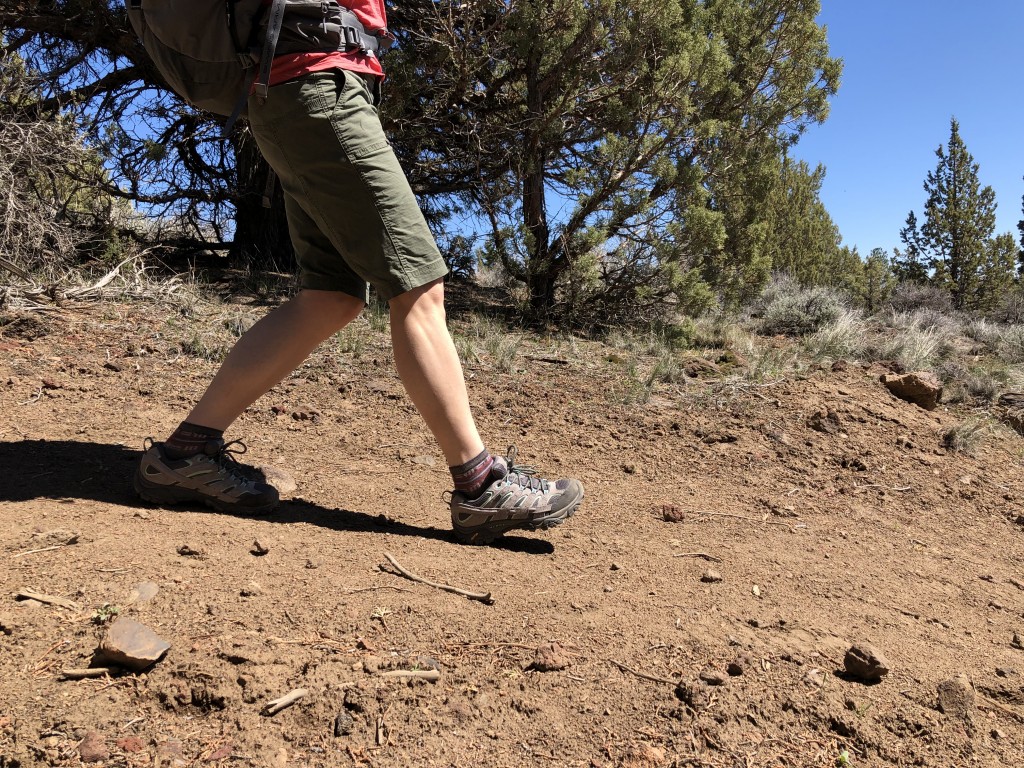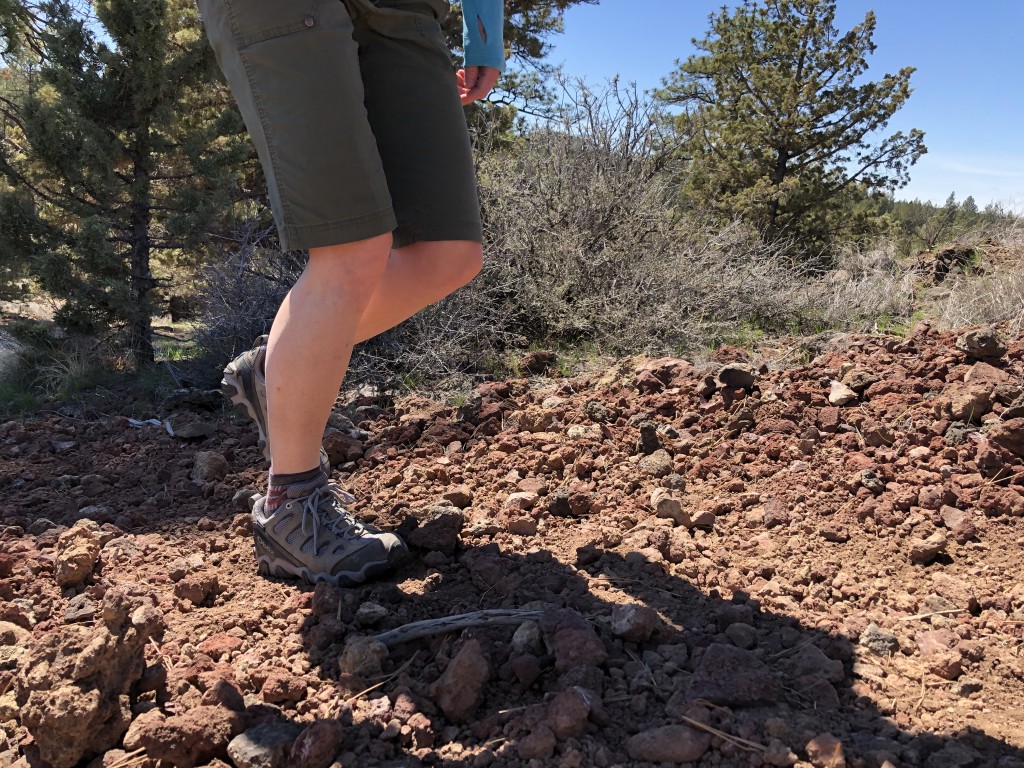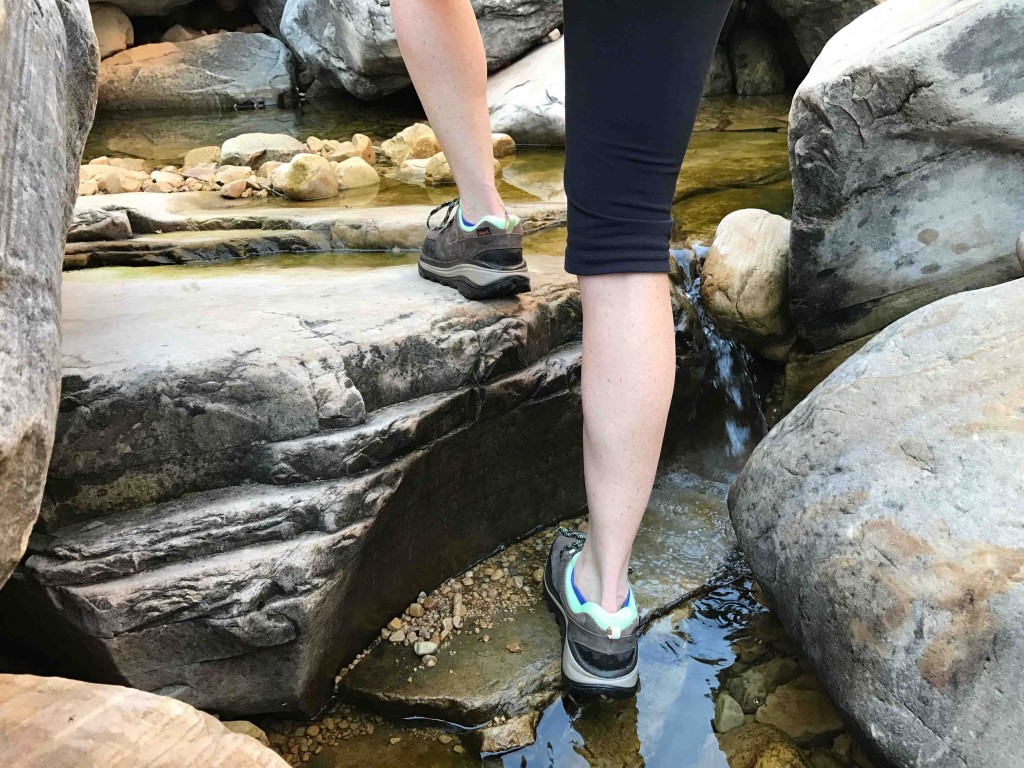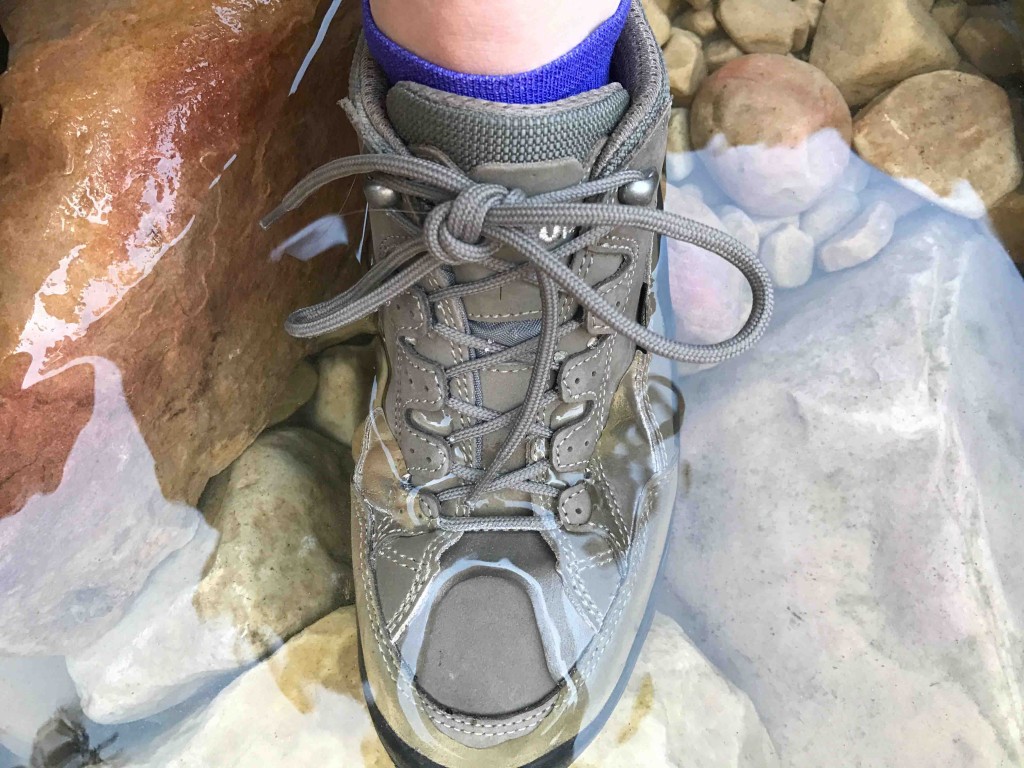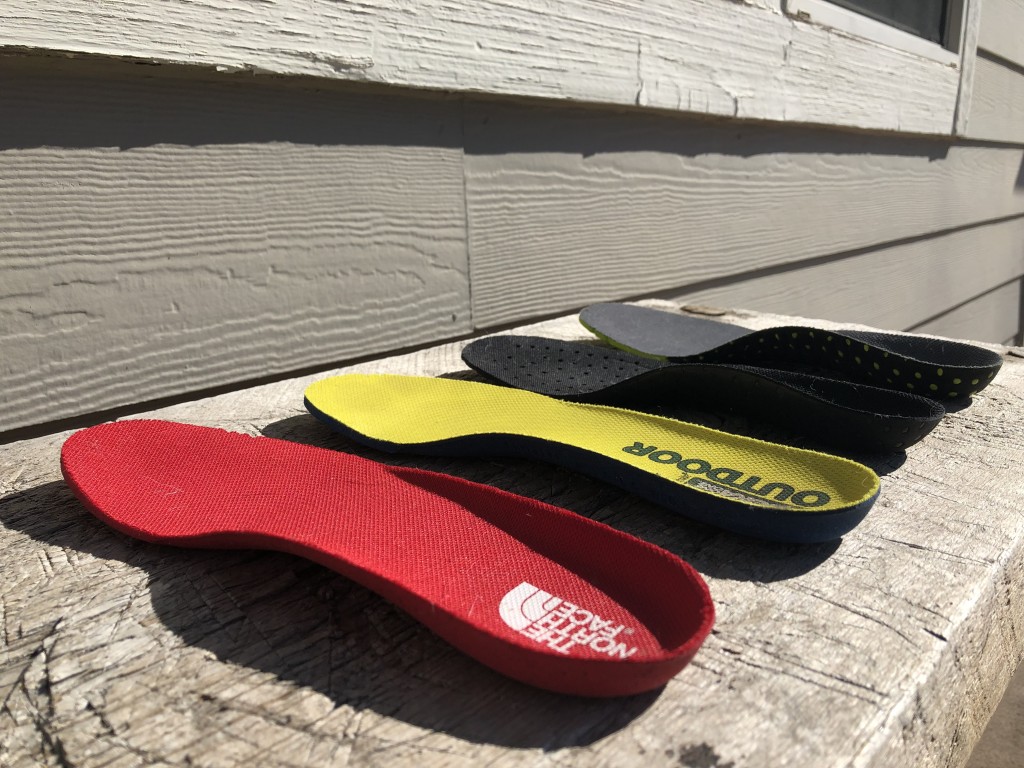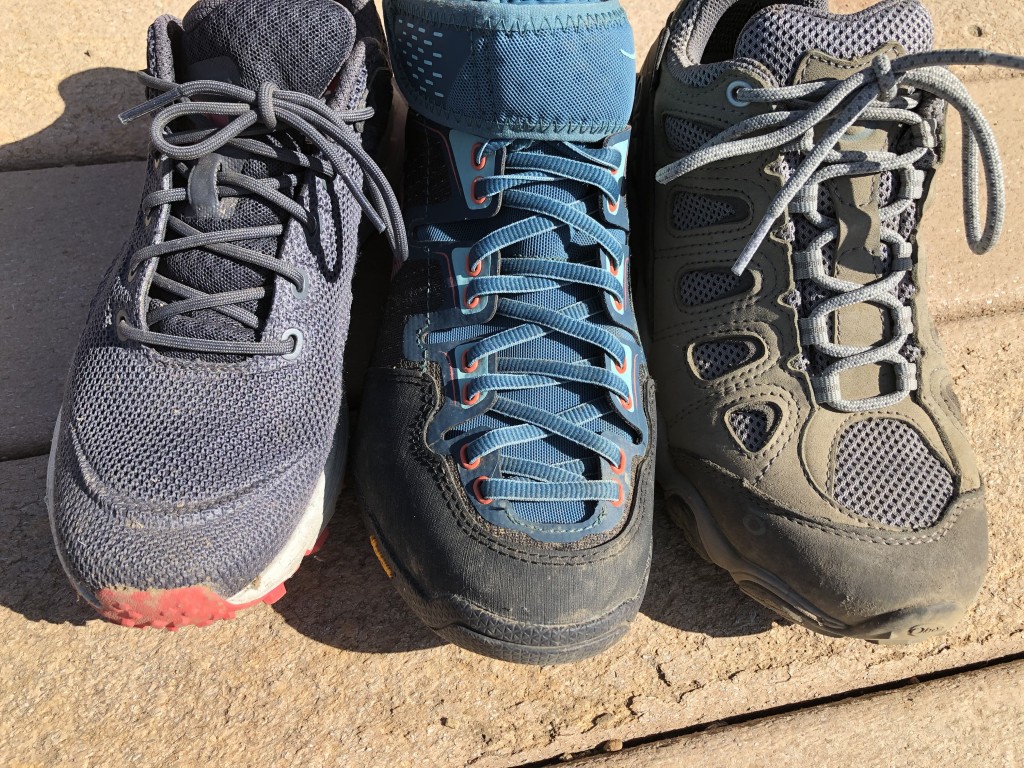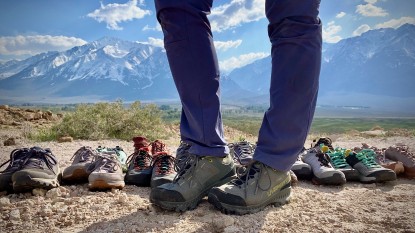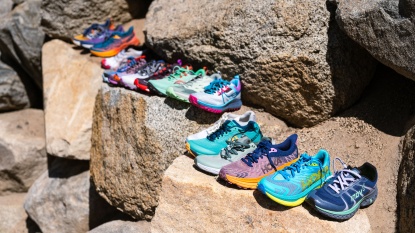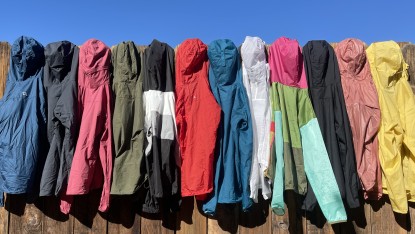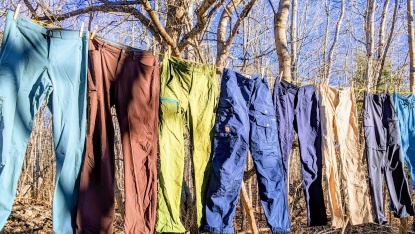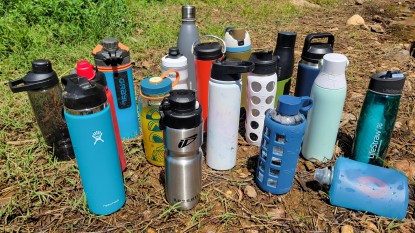Have you ever found yourself standing in front of a wall of hiking shoes and boots and felt unsure of where to begin? We know the feeling and are here to help! This article is intended to clear up some of the confusion and give you tips for selecting your next pair and we have some recommendations for the best women's hiking shoes. We will go over the different types of hiking footwear and explain which ones are best for different types of hiking adventures. We'll also discuss hiking shoe design and materials, and offer some tips on sizing and fit. When you've got a grasp of the basics, our thorough women's hiking shoe review details all of the models that we put through our side-by-side comparison testing, and shows you which ones we preferred and why.
Types of Hiking Footwear
Not so long ago, the only options available for hiking footwear were big, stiff, heavy, and clunky full-leather boots. Thankfully, we can now choose from boots, mids, shoes, and even trail runners when we head out for an adventure. Here is a breakdown of the most common footwear worn while hiking and backpacking.
Trail Running Shoes
Trail running shoes are designed for running (surprise!) on dirt trails and uneven surfaces like granite or sand. They are not made with hiking in mind but are an excellent option for hikers looking for a lightweight and nimble shoe to maximize the distance they travel in the least amount of time. Most weigh around 9-10 ounces per shoe, which is a few ounces lighter than your average hiking shoe while providing the traction necessary for varied surfaces. Trail running shoes typically have less protection around the toes, more sensitivity underfoot, and tend to be comfortable straight out of the box, requiring no break-in period.
Best Uses: trail running, lightweight hiking and backpacking (fastpacking), short day hikes on mellow terrain.
Hiking Shoes
Hiking shoes are the love child of lighter-weight trail running shoes and burlier hiking boots. They share the low ankle and aggressive tread of trail running shoes but tend to be heavier, sturdier, and more durable. With the additional weight, you gain more toe protection and thicker soles to protect your feet on moderate terrain. Many models come in both waterproof and non-waterproof options. Hiking shoes are much stiffer than trail running shoes, providing support, but can still be light enough to keep you moving quickly. They work well for day hikes, moderate backpacking and longer distance backpacking where the pack load does not exceed 20-30 pounds, but that is also dependent on your personal needs for ankle and back body support. Think of them as a step up on the burly scale from a trail running shoe.
Best Uses: day hiking, hiking, moderate backpacking, long-distance lightweight hiking, and backpacking.
Hiking Boots
Hiking boots are classified by their height at or above the ankle, harder rubber soles, and durable construction. A common misconception is that all hiking boots are heavy, but many modern models weigh in at 2-3 pounds per pair and provide much more support and stability in the ankles than a shoe. Boots are best for times when you plan to carry a pack exceeding 30 pounds, are moving on very uneven terrain where extra ankle support is required, and on multi-day trips. Full-leather boots will need to be “broken-in,” or worn on moderate hikes for shorter distances to conform to the shape of your foot and soften up to prevent blisters, but leather/mesh hybrids might be comfortable enough out of the box to take on a long trip right away.
Best Uses: day hiking when added ankle support and protection is required, backpacking with loads heavier than 20-30 pounds, hiking in rough terrain or off-trail, spring or summer hiking where you might encounter snow.
Approach Shoes
Approach shoes are similar in design to hiking shoes, with the addition of a sticky rubber sole and rubber toe rand. They are designed for approaching rock climbing destinations, scrambling on rocky off-trail surfaces, and scaling rocky peaks. While some people wear trail runners and hiking shoes as approach shoes, shoes specifically designed as approach shoes will provide more traction and offer better protection and support. If you are planning to scramble low 5th-class terrain in your approach shoes, you'll want to have a fit that is snugger than you would have for a hiking shoe in order to gain sensitivity on the rock.
Best Uses: climbing approaches, easy to moderate climbing, peak bagging on 4th and 5th class terrain
Key Considerations for Selecting a Shoe for Hiking
Now that you have a better understanding of the types of footwear available, here some are points to consider when selecting your next pair.
Hiking Objectives
So which hiking shoes do you need? Consider the most technical terrain you plan on tackling, most of the time. Unless you want to build a hiking shoe collection, we recommend that you choose a pair that is versatile enough for the majority of your hiking. What is your primary use: day hiking, backpacking, fast-packing or some of each? Now, determine the difficulty level of the terrain: easy, moderate, or strenuous? For day hiking on less rugged terrain, a lightweight shoe with minimal support is sufficient, such as the Arc'teryx Aerios. For day hiking moderate terrain or for easy to moderate backpacking, a shoe that is durable, waterproof, and offering good traction is ideal, like the Merrell Moab 2 WP. For strenuous day hiking or moderate backpacking, support becomes more important, as does durability. In this instance, our Editors' Choice winner, the Oboz Sawtooth II Low is an excellent choice, as is our Top Pick for Comfort, the Hoka Sky Arkali.
Terrain
Knowing the terrain that you'll be hiking on is a key consideration when selecting your next pair of hiking shoes. If you mostly hike on the soft and often muddy trails of the Pacific Northwest, you'll probably want a shoe that is waterproof with mud-shedding lugs. Someone in the Southwest desert might value breathability and protection from rocks and spiny plants. If your goal is to climb the 14ers of Colorado or the 46 highest peaks in the Adirondacks your terrain is going to be different again (exposed granite slabs anyone?). No shoe can do everything, so let your primary hiking terrain steer you in the right direction.
If your favorite trails are soft and relatively flat, traction might not be much of an issue, but if you're constantly scrambling around steep sandstone rock, something with a very sticky sole, like the Merrell Moab 2 WP, is essential. Every pair of hiking shoes that we tested has a different style of traction and tread and in different amounts. The more “aggressive” the tread (deeper lugs that are spaced further apart, often including zig-zag shapes), the better the hold your feet will get on steep and loose trails. Hard rubber soles grip best on dirt trails, whereas softer rubber grips better on rock. While it's rare to find a shoe that works well in a variety of environments, our Editors' Choice winner, the Oboz Sawtooth II, did come close!
Water Resistance
Your footwear achieves water resistance in two ways: a waterproof inner membrane sandwiched into the fabric of the upper or by adding a waterproof chemical treatment to the material that comprises the upper. Gore-Tex (often found as GTX in shoe names) is the most common waterproof/breathable material used in outdoor apparel and footwear. Many shoe manufacturers, like Oboz, use a proprietary material. They all have the same function — to prevent outside moisture from entering the shoe while venting out the moisture inside (your sweat). As much as these materials attempt to add “breathability” to your shoe, there's no question that they'll keep your feet warmer overall than a pair with a lightweight mesh liner.
Polyurethane (PU) coatings are another layer of protection added to many models. This puts a hydrophobic barrier on top of the upper, helping water bead up and roll off your shoe as opposed to absorbing through the material. While it won't make a mesh shoe waterproof, particularly when crossing a stream, it will help protect you from drizzle or when hiking through wet grass, so look for it in your non-Gore-Tex models. There are also aftermarket products that can help make your hiking shoes more waterproof, like SilNet Silicone Seam Sealer.
So the question is, do you need a waterproof shoe? In some cases, maybe not. But if you are hiking for consecutive days, or even heading out on a long day hike where the weather might change, having a waterproof liner is the safe bet. You can always change your socks if your feet get sweaty, but once the whole shoe is wet, you could have some rough times ahead.
Fit
Even though we thoroughly compared, tested, weighed, and wore each model in this review, you will still need to make sure to get a proper fit. We all have different shapes and sizes of feet, and even the most “comfortable” pair might not work for you if your foot shape doesn't line up with the manufacturer's estimation. Based on the pairs that we tried in a women's size 7 (and keep in mind also that width can change according to length), the Oboz, Hoka , and Keen brands have the widest fit, while Salomon are the narrowest. The rest were in the middle somewhere. Both the Oboz Sawtooth II and Merrell Moab come in wide sizes, something to keep in mind for ladies who need a wider shoe.
When it comes to trying on hiking shoes, wear the socks you intend to hike in and also bring any footbed inserts that you plan on using. If you are unsure about specific socks or inserts, consider the conditions you will be hiking in. Are your feet typically cold? Wear insulating socks made of wool. Are your feet typically warm? Choose synthetic socks that wick moisture away. Socks can also help with sizing - thick socks for narrow feet, thin socks for wide feet. Try out a variety of socks to find the best pair for your hiking goals and personal preferences.
See our reviews on the best women's socks and the best hiking socks if you're in need of some upgrades.
Hiking shoes should provide firm support through the arch. Over the long haul, better support will mean more comfort and stability on the trail. Evaluate the fit around the forefoot and toe box. Can you bend your shoes in stride? Is there enough room in the front for your toes to wiggle and splay without rubbing against the sides? Do you have enough room so that your toes don't bash into the end when hiking downhill? Many outdoor retailers will have a ramp you can walk down to test this out. Conversely, is there too much room in the shoe, making for a sloppy feel in the toes? Your foot should be secure enough so that the heel does not lift. Even the slightest amount of heel lift can lead to significant rubbing and blisters if it happens with every step. You may be able to lock your heel down with proper lacing, but sometimes it's a question of the matchup between your heel ergonomics and the cut of the shoe.
Active feet expand in size, and accounting for this before you get on the trail is essential. We recommend trying on footwear in the afternoon rather than in the morning, as your feet will swell a bit throughout the day.
Weight
The old mantra of mountain goers is that “it requires five times as much energy to move weight on your feet as it does to move weight on your back.” By this logic, switching from four-pound boots to two-pound hiking shoes or even a pair of top-rated walking shoes has the same effect as removing ten pounds from your pack. This significant energy savings is an important reason to consider the weight of your footwear.
At OutdoorGearLab, we generally advocate for lighter gear because it enables you to move faster and more freely while you adventure. This also applies to footwear. Though heavy boots have a time and place where they are the right shoe for the job, a lighter shoe is often preferable. We found the weight variance between the lightest and heaviest pairs that we tested to be about a half a pound, and a 4-ounce per foot difference is definitely noticeable. There may be a point when too light can result in too little support, such as with the Merrell Siren Edge Q2 WP, but if you can stay under 2 pounds per pair then your feet will be thanking you.
Uppers
The materials used in the top half of a pair of hiking shoes vary widely, from leather to various synthetics and even combinations of the two. Nubuck leather is a popular choice for this category, as it is both flexible and water resistant. Leather shoes may take some time to break in and tend to be heavier than synthetics. On the plus side, they are usually quite durable.
Synthetic materials can be formulated to varying degrees of stiffness, though in general synthetic shoes require less break-in time than a leather pair. A mesh upper is more breathable than a full leather option, and all of the lightest shoes that we tested, like the Arc'teryx Aerios and the Salomon OUTline, have synthetic uppers. One type is not necessarily better than the other, and this choice often comes down to personal preference and intended uses.
If you're not sure if you prefer synthetic or leather, you can always try a shoe that is a combination of the two. These models typically have a cut-out look to them, with strips of leather framing mesh panels. The mesh provides breathability while the leather provides durability. Just be sure that the leather is double or even triple stitched, otherwise your shoes might fall apart on you.
Insole, Midsole, and Outsole
The insole is a removable (and replaceable) layer that comes in varying degrees of thickness and stiffness. Some insoles are lightweight and thin while others are molded, structured, and an integral part of the support of the shoe, like the Oboz Sawtooth II. Customizable insoles are made of carbon fiber, memory foam, or gel, and can increase the support and comfort level of your shoes. You can replace the factory insole or layer it on top of your custom insole, depending on your personal preference or need to reduce the volume of the shoe.
The midsole is the main structural element that sits between the insole and the sole. EVA (ethylene vinyl acetate) molded midsoles are the most common, and can vary in density from “soft” to “dual-density.” Even the densest EVAs feel “softer” than the alternative polyurethane (PU) midsoles and require little to no break-in period. However, the foam in EVA midsoles will eventually pack in, meaning a shorter life for your shoe.
The sole, also known as the outsole, is the part that touches the dirt. It's traditionally made of hard rubber, but many modern shoes layer rubber over foam. Soft rubber soles tend to have better traction on rocks but also wear out faster than harder formulations. Lug size and shape vary, as well, depending on whether you are hiking on muddy, loose, or sandy ground. Large lugs mean more material and weight but are often a great choice for loose trails.
Toe Protection
All of the hiking shoes in our review have some degree of toe protection. This ranges from leather sewn over the toes to rubber rands to molded toe caps. How much toe protection do you need? It is helpful in rocky terrain and helps prolong the life of the shoe. But beefy toe protection adds weight and it also lowers the sensitivity and agility of the shoe. Again, consider the terrain you will be tackling when making choices about toe protection.
Conclusion
While you might not even notice a well-fitting pair of hiking shoes, you certainly will know if they are ill-fitting or uncomfortable. Take the time to find the right pair for you — there are dozens of manufacturers to choose from and multiple options from each one. Don't let your footwear ruin your next trip, and have a fun (and safe) time out there!


